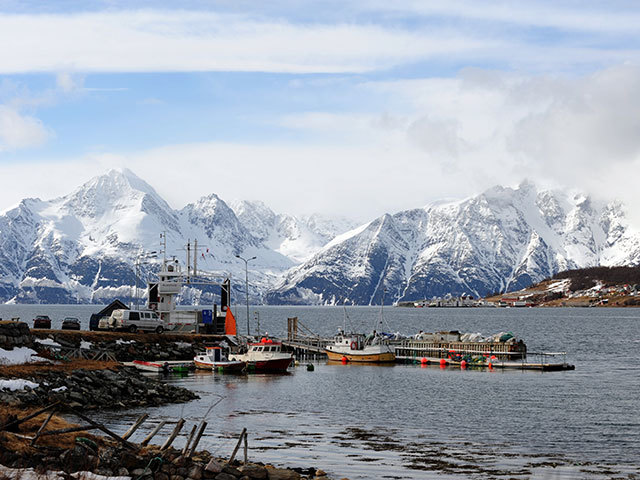
Norway will for the first time start buying kroner with foreign currency from its oil revenue accounts as Scandinavia’s richest nation takes an historic step in covering growing budget needs as crude output declines.
The Nordic country will buy 250 million in kroner ($39 million) a day in October, the Oslo-based central bank said today. The last time the bank tapped the currency market to manage its oil revenue was in October 2013, when it purchased foreign currency. It signalled earlier this year that Norway may need to start buying its own currency. The krone jumped as much as 1 percent against the euro and 0.7 percent versus the dollar.
“The amount that they will buy is even bigger than we expected,” said Kjersti Haugland, an analyst at DNB ASA, which estimates the amount announced today will be a “floor” for buying in the final two months. “It could imply that the spending of oil money has turned out to be actually bigger than budgeted.”
Krone buying marks the start of a new era for western Europe’s biggest oil and gas exporter, which has built an $860billion sovereign wealth fund from its petroleum revenue over the past two decades. The government is using more cash to fill budget needs after oil and gas output fell almost 20 percent over the past decade.
Norway receives oil revenue in two ways. It gets income in kroner from taxes on production and dividends from Statoil ASA, in which the state holds a 67% stake. It also receives foreign currency from its direct stake in offshore production from Petoro AS, a state-owned company.
The krone income had historically been enough to cover budget needs, meaning the central bank, which manages the revenue, now needs to siphon off foreign currency revenue before it’s passed on to the wealth fund.
Norges Bank Governor Oeystein Olsen said today’s move doesn’t mark a shift in how the bank views the krone.
“I hope and I believe that the currency markets and markets in general will see that this policy we have announced is 100% consistent with the policy we pursued previously,” he said in an interview after a speech in Oslo. “We don’t intervene at all with an intention to influence markets. We are just reacting to the krone flows that we receive.”
The krone climbed 0.7% to 8.1249 per euro as of 1:45pm in Oslo. It was little changed against the dollar after surging to 6.4034 earlier in the day.
The krone’s strengthening is “more related to a stigma effect that a central bank is buying its own currency,” Nils Kristian Knudsen, currency strategist at Svenska Handelsbanken AB, said by phone. “The effect will last for some time but it will gradually go back” to where it started, he said.
While the government has limited spending of oil revenue to 4% of the fund to plug budget deficits, its growing size is giving politicians more cash to spend every year. The Conservative-led minority administration in its May revised budget estimated it will use a record 140.9 billion kroner of Norway’s oil revenue to fill budget gaps. That was equal to about 2.8% of the wealth fund. Norwegian governments have kept oil money spending below the rule since 2009.
The central bank flagged a potential shift earlier this year, saying in May it won’t sell kroner in the “coming months” and will begin buying “somewhat further ahead.”
As recently as May last year it was buying 300 million kroner a day in foreign currency.
The purchase represents “a complete reversal of the central bank’s previous behavior,” Karl Steiner, senior currency strategist at SEB, wrote in a note before the announcement. “It historically has acted as a net market seller of krone against foreign currencies in order to transfer foreign currency to the government petroleum fund.”
Recommended for you
